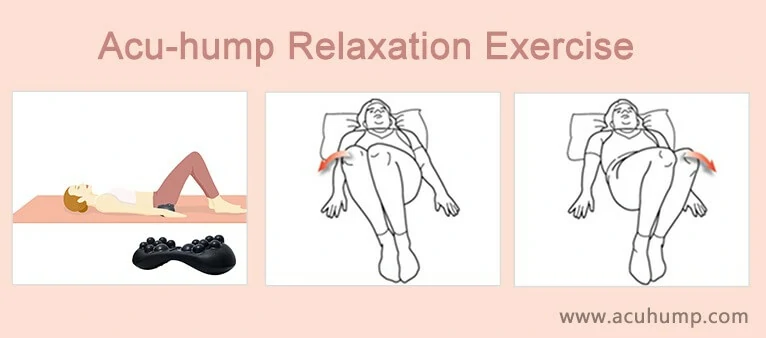Piriformis syndrome refers to a condition characterized by pain and discomfort in the buttocks, often radiating down the leg. It is crucial to address this syndrome promptly through appropriate treatment to prevent further complications.
What causes piriformis to flare up
The piriformis muscle, located in the buttocks, plays a significant role in hip rotation and stability. Factors such as overuse, muscle imbalances, trauma, or anatomical variations can lead to piriformis syndrome. Identifying these triggers and avoiding high-impact exercises that exacerbate symptoms is essential for recovery.
Diagnosing Piriformis Syndrome
Healthcare professionals employ a clinical evaluation to assess symptoms and perform tests to confirm the diagnosis. Diagnostic imaging techniques such as MRI or electromyography may also aid in the differential diagnosis to ensure accurate identification of piriformis syndrome.
Non-Surgical Fix of Piriformis Muscle
Rest, ice, compression, and elevation (RICE) therapy can alleviate acute pain and inflammation. Over-the-counter pain medications and heat therapy can provide temporary relief. Physical therapy exercises specifically targeting the piriformis muscle and surrounding structures can improve strength and flexibility. Additionally, incorporating stretching techniques into daily routines can enhance muscle flexibility and increase range of motion.
Alternative and Complementary Therapies
Alternative treatments like piriformis syndrome acupuncture points can offer targeted pain relief by stimulating specific points. Chiropractic adjustments may aid in realigning the spine and pelvis, relieving pressure on the piriformis muscle. Massage therapy can help to fix tense muscles, improve blood circulation, and reduce pain. Specialized tools such as the Acu-hump can be utilized to release tight muscles effectively.
Acu-hump is a piriformis massage tool that specifically targets and releases tension in the muscles associated with piriformis syndrome. This innovative tool features 14 massage protrusions strategically designed to stimulate acupressure points and effectively release tight muscles.

Acu-hump: 30-day return policy. No risk for you.
Incorporating Acu-hump into your treatment plan can provide dual benefits.
Firstly, it serves as an effective deep tissue massage tool, specifically targeting the muscles affected by piriformis syndrome, including the piriformis muscle and its surrounding areas. By applying pressure and massaging these areas, Acu-hump helps to fix tension, promote improved blood circulation, and reduce pain and discomfort.

Acu-hump: Full refund policy. No risk for you.
Additionally, Acu-hump can be used as a stretching tool to enhance stretching exercises. By placing the Acu-hump under the affected muscles and gently leaning or rolling on it, individuals can optimize the effectiveness of their stretches, particularly focusing on the piriformis muscle. This targeted stretching technique can lead to quicker and more effective relief from the piriformis sciatica symptoms.

By utilizing the unique design and benefits of Acu-hump, individuals with piriformis syndrome can enhance their self-care routine and experience targeted muscle relief. Whether used as a massage tool or a stretching tool, Acu-hump offers a specialized approach to managing the symptoms of piriformis syndrome and promoting overall muscle health and flexibility.
Lifestyle Modifications
Correction of posture and ergonomic adjustments can minimize stress on the piriformis muscle. Maintaining a healthy weight can alleviate strain on the muscles and fix symptoms. Incorporating proper warm-up and cool-down routines before physical activities can help reduce the risk of injury. Regular exercise to strengthen glute muscles and improve overall flexibility is crucial in managing piriformis syndrome.
Surgical Interventions
In severe and unresponsive cases, surgical interventions may be necessary. Options include piriformis muscle release surgery and decompression of the sciatic nerve. Rehabilitation and post-surgical recovery are essential for optimal outcomes.
Prevention Strategies
To prevent piriformis syndrome, maintaining good posture and employing proper body mechanics during daily activities is crucial. Regular stretching and strengthening exercises targeting the hip, pelvis, and surrounding muscles can help prevent muscle imbalances. Incorporating appropriate warm-up and cool-down routines before and after physical activities can reduce the risk of injury. Finally, listening to the body’s signals and avoiding overexertion is essential for preventing muscle strain.
Early diagnosis and proper treatment methods are crucial in effectively fixing piriformis syndrome. Collaborating with healthcare professionals and creating a personalized care plan is essential to address individual needs. By following recommended strategies and techniques, individuals can take control of their health and well-being, effectively preventing and fixing piriformis syndrome.
